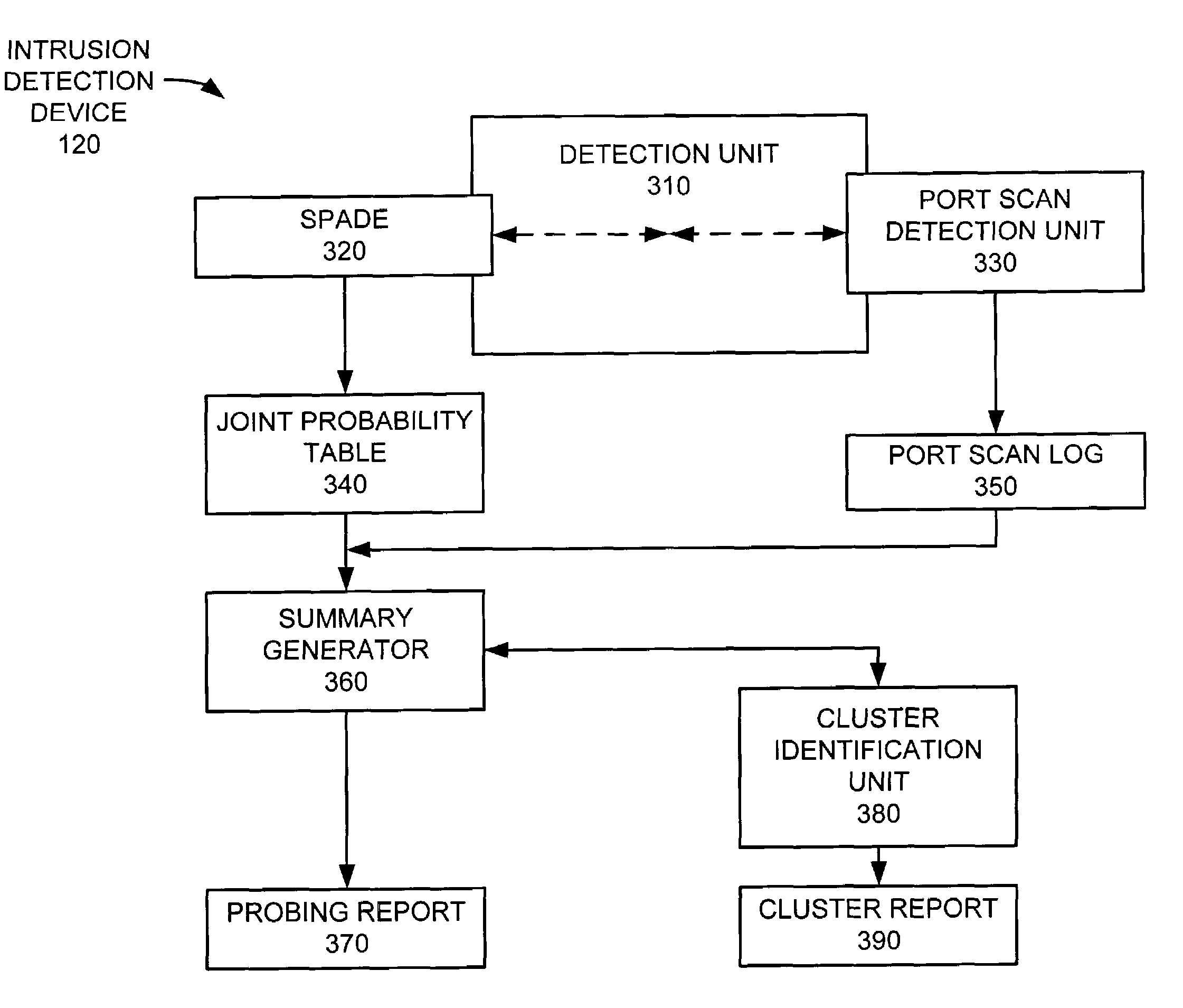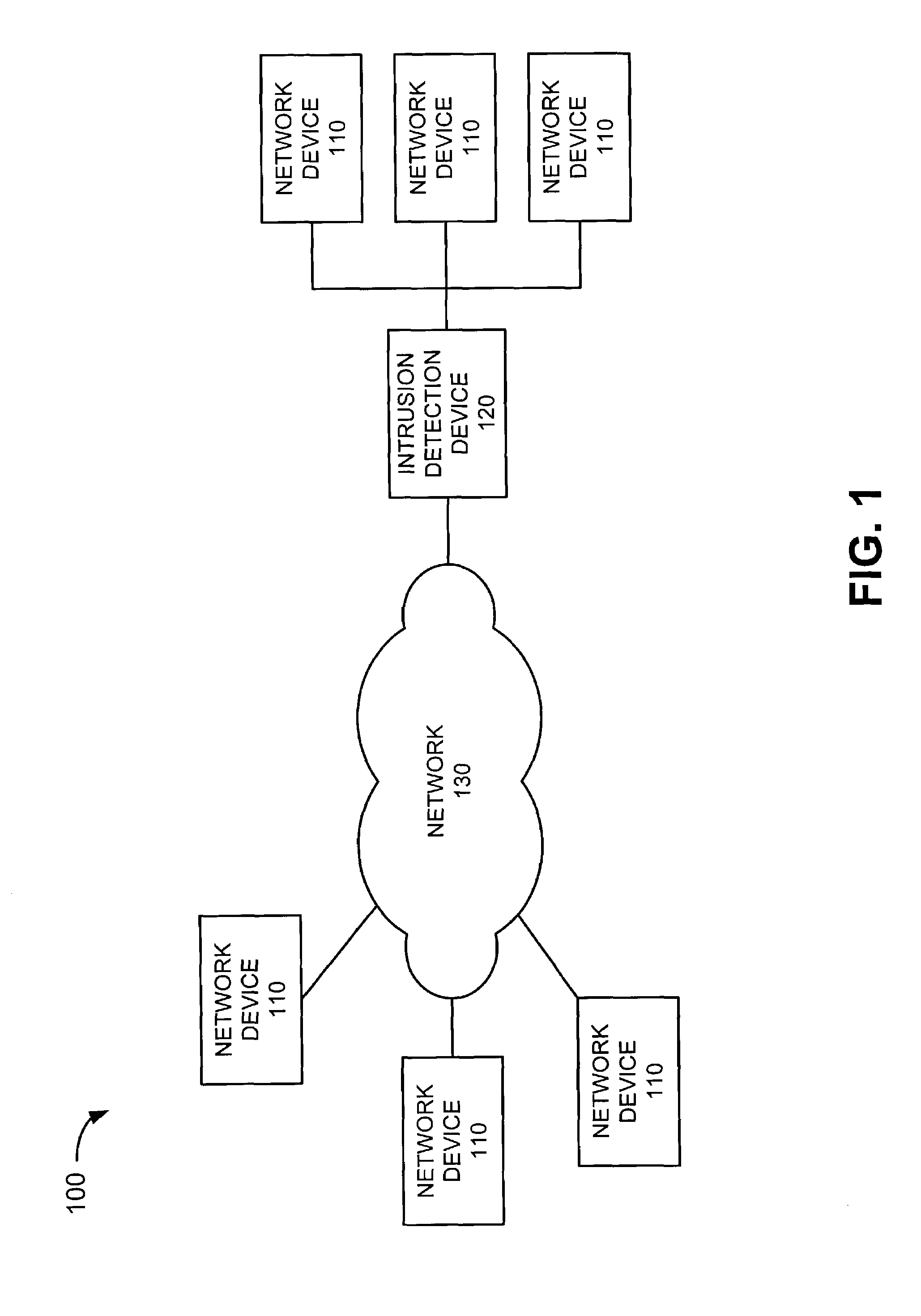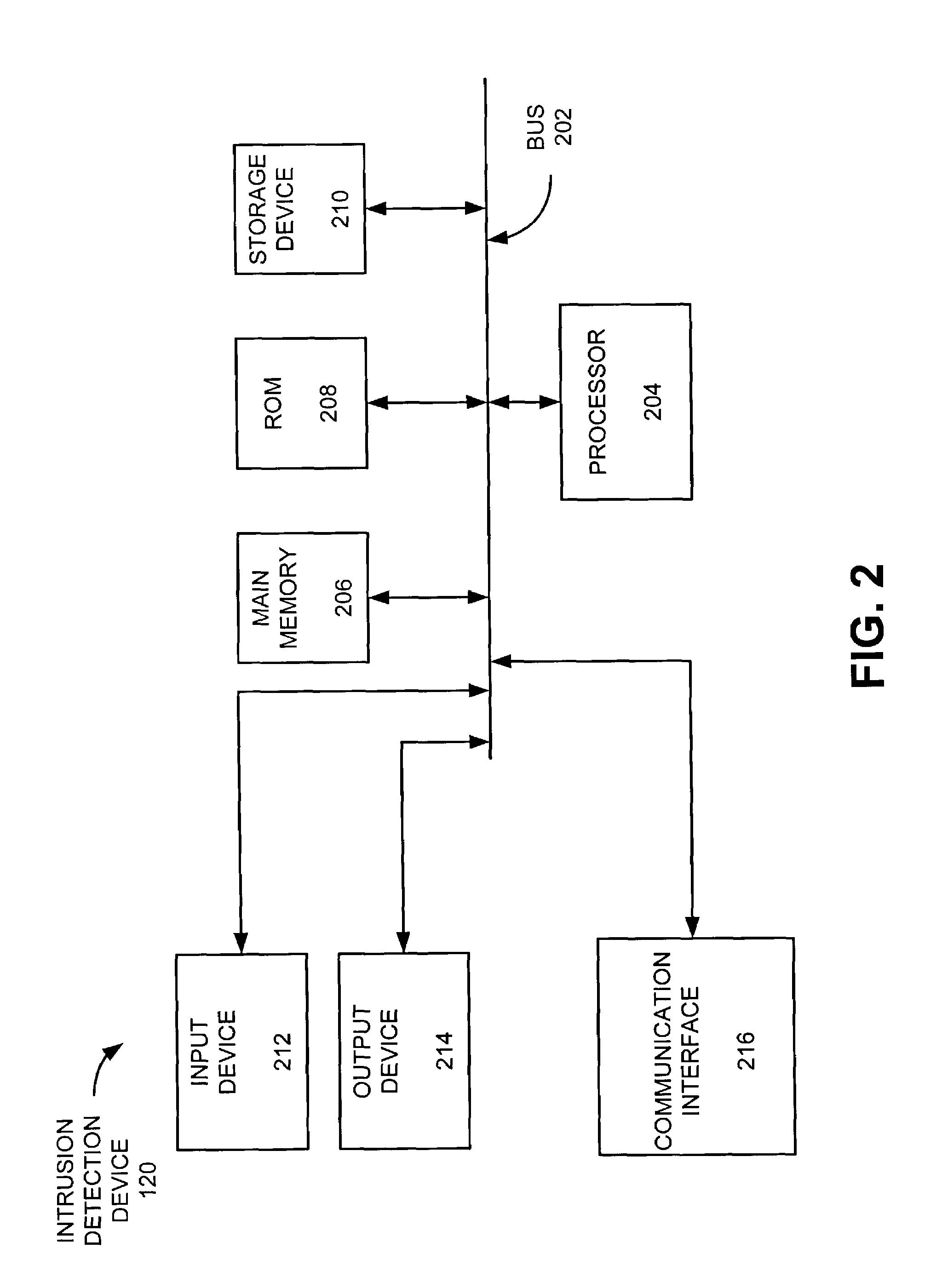Systems and methods for detecting network intrusions
a network intrusion and detection system technology, applied in the field of communication systems, can solve the problems of source device not having advance knowledge of the location of these services, snorting pre-processors, and network attacks a major threat to the continuous operation of network devices, so as to enhance the ability to detect malicious network activity and improve network security
- Summary
- Abstract
- Description
- Claims
- Application Information
AI Technical Summary
Benefits of technology
Problems solved by technology
Method used
Image
Examples
Embodiment Construction
[0021]The following detailed description of implementations consistent with the present invention refers to the accompanying drawings. The same reference numbers in different drawings may identify the same or similar elements. Also, the following detailed description does not limit the invention. Instead, the scope of the invention is defined by the appended claims and their equivalents.
[0022]Implementations consistent with the present invention provide a security device for aiding in the detection of network intrusions. In a first implementation, an intrusion detection device identifies probing activity by measuring the behavior of a source activity in terms of independence / uniformity of access to network services. In a second implementation, the intrusion detection device identifies novel forms of malicious behavior by clustering sources of activity that exhibit similar behavior with respect to service usage.
Exemplary System
[0023]FIG. 1 illustrates an exemplary system 100 in which...
PUM
 Login to View More
Login to View More Abstract
Description
Claims
Application Information
 Login to View More
Login to View More - R&D
- Intellectual Property
- Life Sciences
- Materials
- Tech Scout
- Unparalleled Data Quality
- Higher Quality Content
- 60% Fewer Hallucinations
Browse by: Latest US Patents, China's latest patents, Technical Efficacy Thesaurus, Application Domain, Technology Topic, Popular Technical Reports.
© 2025 PatSnap. All rights reserved.Legal|Privacy policy|Modern Slavery Act Transparency Statement|Sitemap|About US| Contact US: help@patsnap.com



